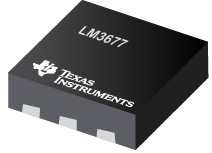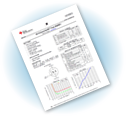Getting started with food digitalisation

The food and beverage industry is one where innovation in product development or design can boast a significant competitive advantage. As such, it’s no surprise that food manufacturers are increasingly considering digitalisation of operations to augment adaptability, improve throughput and strengthen flexibility. Here, Sean Robinson, Service Leader at Novotek UK and Ireland, explains how food manufacturers can plan digitalisation in the most effective way.
In the past 12 months, the food industry has been forced to re-evaluate and re-assess its operational priorities. For years, many manufacturers focussed on flexible production to enable diverse product lines and mass customisation, in line with shifting consumer demands. In 2020, this was forced to change, and production efficiency and operational adaptability became the focus. Once more, automation and digital technologies came to the forefront of food manufacturing priorities.
Digitalisation is a word that has been banded around a lot in industrial markets for the past few years, serving as a catch-all phrase encompassing everything that generates, records and communicates data. Unfortunately, as with most amorphous phrases, this leads to confusion among managers about how to introduce these technologies, which causes costly errors in implementation, such as overlapping data collection systems or introduction of technologies that do not serve a strategic purpose.
For food manufacturers at the beginning of their digitalisation journey, the first step is to define an agreed and important goal, which the company can reverse engineer a solution from. Whether looking to deliver on a continuous improvement object that has been identified as part of a formal process, or just illustrating the value of an engineering team unleashed with time to think, it’s key to let the desired improvement dictate what kind of digitalisation will be needed.
For example, if material costs are too high and the agreed goal is to reduce them, a digitalisation project should establish systems that identify the factors influencing this. Understanding the root causes for yield problems could require a combination of machine data, ambient condition data, quality or lab data and information about material quality provided by suppliers. Thinking through where data is readily available, versus where it’s trapped in paper, spreadsheets or isolated automation, will ensure the plan can deliver on the purpose.
Planning at the outset of investing in digitalisation, but some food manufacturers may will have undoubtedly already rushed into digitalisation in years past. For businesses with some digital or automation technologies in place, one of the most valuable things to do is review the lay of the existing digital landscape. The easiest approach to doing this is to apply the ‘three Rs’ to your existing data: reduce systems overlap, reuse data and recycle data.
Reducing data collection system overlap not only makes it easier for managers to identify the source of a specific data set, it also streamlines costs. Why have a downtime system collecting machine event data, a yield analysis system collecting overlapping data and a work in progress tracking system that is separate to both of those? Having three systems collecting fundamentally the same data means duplicated configuration and deployment costs, as well as possible conflict over which one holds the ‘truth’.
An effective data and digitalisation strategy should also aim to use collected data in various calculations to produce several insights. For example, the downtime event data collected for OEE calculations may be part of what’s needed to solve a quality problem. The energy and water data collected for sustainability reporting may hold the key to real savings opportunities. Wherever there is a connection to a data source, managers should think of ways to make sure that a data point only needs to be collected once in order to be used many times.
Finally, offline analysis tools and some of the new analytics packages on the market could mean that old data offers recurring value as a firm chases finer and finer points of improvement. So, it’s important to set up a data management approach and data management platforms that can give you the option of making repeated use of data.
Digitalisation projects can lead to more innovative and effective ways of working for food manufacturers, but they rely on careful planning and strategic implementation. By giving full consideration to the goals to be reached or how data is used within a site, food businesses can ensure their systems are always effectively aligned with their goals.
Similar articles
More from Novotek
- Free consultancy helps industry see sense in data 29th June 2021
- HMI/SCADA software trial offers boosted efficiency 28th May 2021
- Getting started with food digitalisation 20th May 2021
- Achieving plant resiliency 26th April 2021












Write a comment
No comments